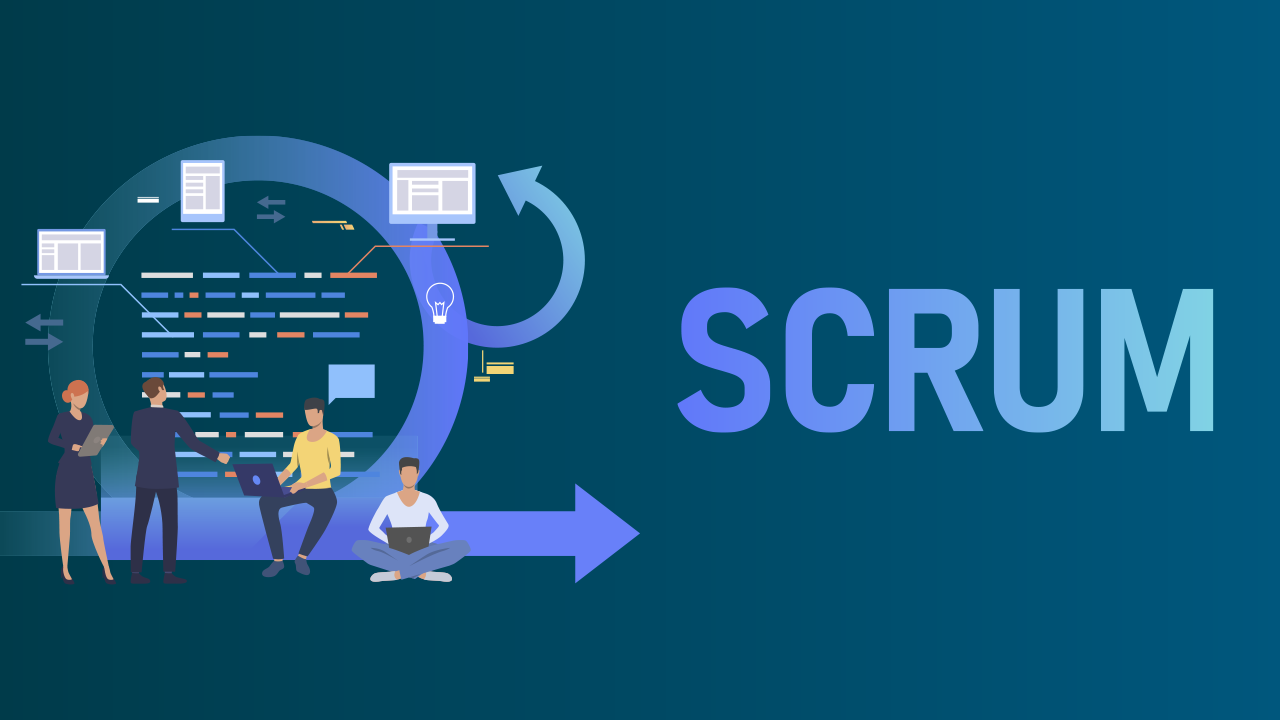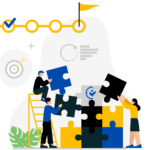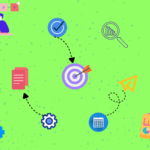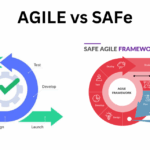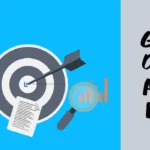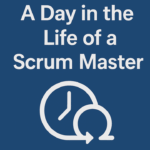If you’re a project manager, software developer, quality tester, or engineer, chances are you have heard about the Scrum Agile Project Management Framework. It’s one of the most popular agile methodologies, known for delivering complex products in manageable increments that adapt to changing customer needs and requirements. But what is Scrum, and why has it become such a buzzword in project management?
In this article, we will have a detailed look at the Scrum Framework, its values, principles, events, and pillars. We will also explore one of the ideal agile project management tools that scrum teams can use to adapt the Scrum framework successfully.
So let’s get started!
What is Scrum?
Scrum is an Agile project management framework rooted in empiricism, a philosophy that emphasizes decision-making based on experimentation, observation, and real-world experiences. Instead of relying on rigid structures and processes, Scrum encourages the teams to work in small pieces with feedback loops and experimentation to learn and improve along the way continually.
The term “Scrum” was first introduced by Jeff Sutherland and Ken Schwaber in the late 90’s. They created the framework to overcome the shortcomings and challenges of traditional project management techniques, especially in the software industry. Their main goal was to develop a methodology to efficiently manage complex projects, where requirements frequently change and teams need the flexibility to adapt.
The name “Scrum” itself was inspired by the sport of rugby, where “Scrum” is a formation in which the team comes together in a round circle to plan the strategy for the game. Similarly, in the Scrum framework, teams collaborate during Scrum events to plan, review, and adapt their work.
Scrum Artifacts
In Scrum Framework, artifacts are tools that provide knowledge and information about the product and its requirements. It provides transparency and ensures all team members, stakeholders, and decision-makers have an understanding of the work to be done and progress made. There are three scrum artifacts:
Product Backlog
The Product backlog or simple “backlog” is a well-prioritized list of all the work items in a project that need to be completed to develop a product. It includes user stories, tasks, enhancements, bug fixes, knowledge acquisition, and any other requirements related to the product. It is dynamic and continuously refined during the “backlog grooming” process. The product owner is generally responsible for creating and maintaining the backlog.
Sprint Backlog
The Sprint backlog is a subset of the product backlog that includes the list of tasks the team will complete during a sprint. It is created during the sprint planning event with the collaborative effort of the product owner, scrum master, and development team. Unlike product backlog, the sprint backlog is owned by the development team and it evolves during the timeframe of the sprint.
Increments
An increment is a potentially shippable product that the scrum team delivers at the end of each sprint. Work can be considered increment only when it meets the Definition of Done and acceptance criteria.
Read more about scrum artifacts here
Scrum Team
The Scrum team is one of the most powerful components of the Scrum Framework. It consists of skilled individuals who work to plan, develop, and deliver the product. There are three roles in the scrum team:
Product Owner
The product owner is an individual who defines the product vision and manages the product backlog. He communicates with the stakeholder to identify their needs, expectations, and goals and create the task to fulfill them. He ensures that each delivered increment is aligned with the product goals, market trends, and stakeholders’ objectives.
Scrum Master
The Scrum Master is the backbone of the Scrum team who oversees all the Scrum processes and facilitates the whole Scrum team. He coaches the scrum team on the scrum framework and helps them implement it. He facilitates sprint events such as daily scrum, sprint planning, review, and retrospectives to help them plan the work, track progress, and optimize performance.
Additionally, he removes blockers for the development team and supports the product owner to refine the product backlog. He also communicates with stakeholders and higher leadership to keep them engaged and up-to-date with project progress.
Development Team
The Development team consists of developers, quality testers, and engineers who work on the sprint backlog items to create the increments. The development team is cross-functional, self-organized, self-managed, and independent. They work closely with the scrum master and product to plan and execute the sprints.
Read more about the Scrum Team here…
Scrum Events
Scrum events or ceremonies are structured recurring activities that help the scrum team plan their work and assess their performance. Each event has its purpose and keeps the scrum team focused, aligned, and organized. Here is a comprehensive overview of five scrum events:
Sprint
The sprint is the center of all scrum events in which the team works together to deliver the increments. It is a short timeboxed iteration, typically lasting 1-4 weeks. It has its own sprint backlog and sprint goal.
Sprint Planning
Sprint planning is the first event where the team plans the sprint and decides the sprint goal. They select a prioritized list of work items from the product backlog and create a sprint backlog. Additionally, the team creates a detailed plan and how to complete these work items within the given timeframe and achieve the sprint goal.
Daily Scrum
Once the spring kicks off, the development team holds a short daily scrum to share their progress and identify blockers. The Scrum Master facilitates the daily scrum. It is a 15-minute short meeting where each team member answers three questions:
- What did I do yesterday?
- What I will do today?
- What are the impediments?
Sprint Review
After the completion of the sprint, the scrum team and stakeholders participate in the sprint review meeting to review the completed work. This is a timeboxed event where the scrum team showcases their increments to stakeholders, gathers their feedback, celebrates achievements, and identifies areas of improvement.
Sprint Retrospective
The Sprint retrospective is the last event in the sprint cycle. It is a timeboxed meeting where the Scrum team reviews their performance and identifies what could be improved in the upcoming sprint. They ask three questions:
- What went well?
- What went wrong?
- What could be improved?
The common difference between sprint review and retrospective is that the former revolves around the review of the increments and their improvement, while in the later meeting team reflects on their process, strategies, and performance.
Read more about Scrum Events here…
Scrum Pillars
The Scrum Framework is built on its three core pillars that provide the foundation for its success. These pillars ensure the team stays aligned, collaborative, innovative, and courageous. They help the scrum team continuously improve and stay ahead of market trends. Here is an overview of the three scrum pillars:
Transparency
Scrum Framework ensures that the scrum team and stakeholders have clear visibility into the progress and outcomes of the product. There should be transparency in the product backlog, sprint backlog, sprint goals, and scrum events. Transparency in the scrum process enhances collaboration, boosts trust, and increases stakeholders’ satisfaction.
Inspection
The next pillar of the scrum revolves around continuous inspection of the complete work, team performance, and development processes via sprint review and retrospectives. This allows the team to identify areas of improvement, resolve challenges, and enhance team velocity. As a result, the team becomes more efficient and builds high-quality products.
Adaption
Adaption means the scrum team should optimize their processes and improve products based on the feedback collected from the sprint review and retrospective. This pillar helps the team to become a better version of themselves. Additionally, it ensures that the product is aligned with the changing customer needs and market trends.
Read more about Scrum Pillars here…
Scrum Values
Scrum Framework comes with a set of values that shape the behavior and culture of the scrum team. They outline what kind of attributes a scrum team should possess and how they interact with each other. The five scrum values are as follows:
Openness means the team should be transparent and open to new ideas, challenges, and opportunities that can help them improve their efficiency, productivity, and product quality.
Courage: Every team member should have the courage to speak their ideas, concerns, and opinions. Additionally, the scrum should face the challenges with courage and confidence.
Respect: Cohesion and collaboration are the foundation of the scrum team and to ensure this team members should respect each other. It will foster a culture of mutual understanding and allow the team to bring versatile ideas to the table.
Commitment: Each team member should be dedicated to their work and focus on achieving sprint goals. They should take full responsibility for assigned tasks and contribute to the overall project’s success.
Focus: The Scrum team should stay focused during the sprint cycle and other events such as daily scrum, sprint planning, review, and retrospectives.
Read more about Scrum Values here…
Implement Scrum with Scrum Slate
Scrum is a dynamic and adaptive framework that empowers agile teams to efficiently deliver complex projects effeciently. Although, the Scrum guide has outlined the Scrum values, principles, and artifacts that enable the Scrum team to effectively work in a dynamic working environment, implementing these effectively can be challenging without the right project management tool.
Scrum Slate is an excellent agile project management specifically designed for agile teams that want to adopt the Scrum framework. It consistss of features that strictly follow the scrum guide and make it easier for teams to manage scrum artifacts, events, and teams.
Unlike other project management tools, Scrum Slate has a clean and initiative interface making it easier for teams to use the tool. Additionally, we made a tool highly flexible and customizable. This means you can effortlessly to to customize the processes according to your team’s’s needs and workflow. Besides, the advanced charts and graphs provide clear visibility into backlog activity, sprint progress and team performance. More feature like QA management are coming soon, making it ideal for software development teams.
So what are you waiting for?
Start you trail on Scrum Slate today and enjoy unlimited access to all premium features for free.
